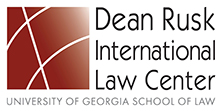Abstract
Due to the rapid acceleration of merger movements in the 1980s, the adoption of new merger regulation was a must for the European market. Before the new merger regulation was adopted in 1989, the European Commission used to apply the general competition rules of the Rome Treaty when dealing with mergers. The Commission used to interpret Articles 85 and 86 of the Rome Treaty as a means to condemn mergers that would lead to an abuse of a dominant position at a European level; at that time, there was an absence of complete and systematic control as far as structural modifications resulting from the concentration. Article 235 set the basis of the new regulation, creating new substantive rules and broadening the scope of the text. The Commission will now assess proposed mergers based on two conceptions: the integration of the national markets, and the maintenance of the competition process. In order for the Commission to determine an abuse of dominant power in a “relevant” market, or the market in question, an abuse of dominant power has to be found on a “reference” market. This paper will investigate whether the determination of the relevant market is the right method to get a fair idea of the degree of power of a merger. This paper will answer questions such as whether or not the Commission has turned to a less classical analysis of the relevant market, and what the main changes are in comparison with the period before 1989.
Repository Citation
Haubold, Benedicte, "The Relevant Market in European Merger Law" (1995). LLM Theses and Essays. 180.
https://digitalcommons.law.uga.edu/stu_llm/180
Included in
Antitrust and Trade Regulation Commons, Business Organizations Law Commons, Commercial Law Commons, European Law Commons, International Law Commons, Law and Economics Commons, Legislation Commons


